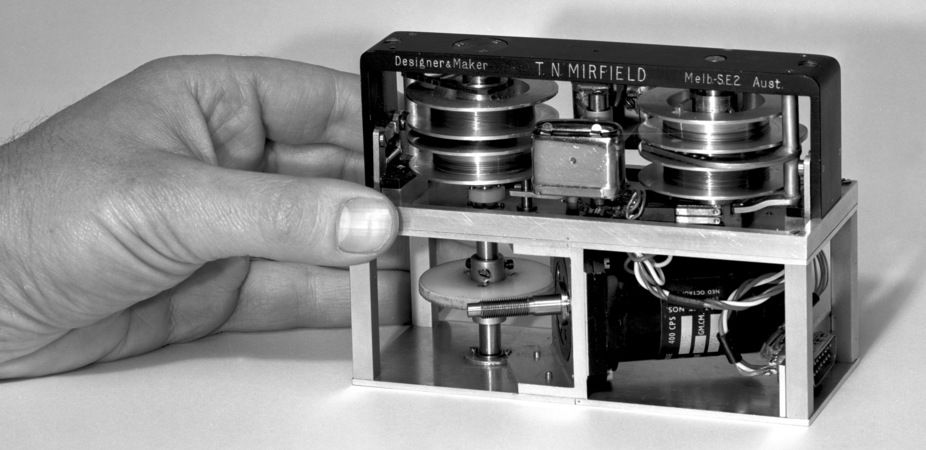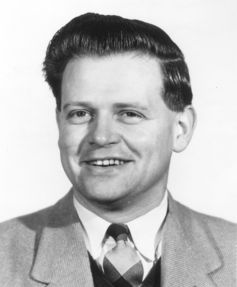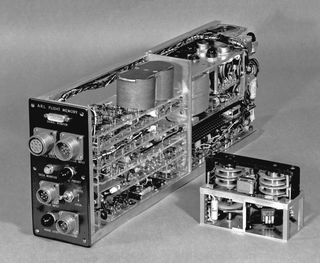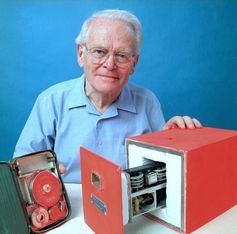
The Black Box: An Australian Invention That Nearly Didn't Happen

This article was originally published at The Conversation. The publication contributed the article to Live Science's Expert Voices: Op-Ed & Insights.
The search operation for missing flight MH370 continues to hear signals that could be from the plane’s black box recorders.
It’s only when those recorders are recovered that investigators will be able to find out what happened to the Malaysia Airlines Boeing 777 and the 239 passengers and crew.
But how did flight recorders come about in the first place? While they were invented in Australia, their adoption by the air industry was far from smooth or straightforward.
Here the story is told by Bill Schofield (co-author of this article) who worked for a time with David Warren, the inventor of the black box.
Why are our planes crashing?
The most curious aspect of the development of the black box flight recorder was the widespread resistance to its adoption, as it encapsulated the most fundamental tenet of scientific inquiry – gathering reliable data to draw conclusions.
It arose out of boredom during a meeting in the 1950s in Canberra. Experts from the Aeronautical Research Laboratory (ARL; now part of the Defence Science and Technology Organisation or DSTO) were trying to find why the new British aircraft – the Comets – were crashing.
Sign up for the Live Science daily newsletter now
Get the world’s most fascinating discoveries delivered straight to your inbox.
David Warren was a chemist employed to conduct research on fuels for the new gas turbines that were entering aeronautical service at that time. He’d been asked to calculate what the effect would be if the fuel tanks on the Comets were blowing up.

His answer was that it would not explain the damage of a recovered crashed Comet. While other experts speculated on possible causes during he had an obvious (in hindsight) thought – what they needed was data.
So he went back to his lab and wrote a very short tech memo on the need to record data in aircraft that would assist crash investigation. For the technology of the day, recording all aircraft flight data was impossibility.
Dr Warren thought that the Comet pilots would have known what was wrong with their aircraft, which is why black boxes include a cockpit voice recorder.
(It was eventually determined that the Comets crashed due to a fatigue crack at a square window corner, near the radio direction-finding aerial situated in the roof. The crack would have catastrophically torn, an event the pilot would have not likely seen.)
Recorders need to survive the crash
In the early 1950s none of the recording tapes would survive a burning plane crash, but at a trade fair Dr Warren saw the first of the wire voice recorders. The Miniphon wire recorder was the basis of Dr Warren’s first elemental recorder – now in the DSTO library at Port Melbourne (pictured, top).
He found that capturing clear records of cockpit conversation from microphones in the instrument panel and overhead was anything but easy but over time, he developed usable techniques.
Working with instrument colleagues at ARL they found a way of putting flight data as well as voice recording on the wire. This led to the construction of a much improved version in the late 1950s which was very advanced for its time.

Dr Warren showed remarkable tenacity in the black box development; he was a chemist engaged to and under continual pressure to focus on fuels and pass his black box invention over to the instrumentation section.
While others could develop the box it was Dr Warren who tried to get it adopted – and against unbelievable resistance. In an official letter from the Air Force rejecting the suggestion of putting boxes on RAAF planes it was stated that Dr Warren’s voice recorder would yield “more expletives than explanations”.
After the fatal crash of a Fokker Friendship approaching Mackay airport in Queensland in 1960, Justice Spicer, chairing the Board of Inquiry, stated that black boxes should be installed in commercial aircraft.
But the Australian Department of Civil Aviation purchased a US system instead of Dr Warren’s.
The US system proved useless in a subsequent air crash investigation. A commercial opinion of the day said the worldwide market would be as little as six boxes per year as they would only be installed on experimental aircraft during proving flights.
The Defence Department declined to patent the device as it saw little commercial justification for the cost of A£2,000.
A chance meeting
The whole flight recorder project had languished until 1958 when Laurie Coombes, then director of the ARL, wished to fill a gap in the schedule of a visiting UK official Sir Robert Hardingham, the Secretary of the British Air Registration Board. Coombes introduced him to Dr Warren who talked about the black box, and not fuels research.
Sir Robert thought it was an excellent idea and Dr Warren was soon flying to the UK to present it to the Royal Aeronautical Establishment and a few UK commercial instrument makers.
He came home through the US visiting a number of aeronautical establishments and commercial companies – none of which were at all interested. The first black boxes were initially produced in the UK with acknowledgement of its Australian origins but these acknowledgements soon disappeared.
A lost invention

In 1965, cockpit voice recorders were mandated in all commercial aircraft built in the US and the western world followed.
The IP rights of Australia to the invention were, by this time, compromised, but in recognition of the background IP the Department of Defence was paid UK£1,000.
I joined ARL in 1965 when the work on the black box was winding down but Dr Warren often talked to me at length about the history of the black box.
He wasn’t angry that he’d not been taken seriously by the powers-that-be, but more upset that Australia missed out in exploiting an invention which is, today, in hundreds of thousands of aircraft.
After the black box he started work in the early 1960s on fuel cells – the type now being installed in submarines. Again, though the powers-that-be could not at that time see any application for fuel cells so he was moved on again and started analysing the Earth’s need for energy and the likely sources of such energy.
His public lectures were well attended and would be highly relevant today. He was a free spirit with an unusual vision. He died in July 2010, at the age of 85.
This article was co-authored with Bill Schofield. Bill’s first scientific job was David Warren’s assistant in the mid-1960s.
John Faulkner does not work for, consult to, own shares in or receive funding from any company or organisation that would benefit from this article, and has no relevant affiliations.
This article was originally published on The Conversation. Read the original article. Follow all of the Expert Voices issues and debates — and become part of the discussion — on Facebook, Twitter and Google +. The views expressed are those of the author and do not necessarily reflect the views of the publisher. This version of the article was originally published on Live Science.












